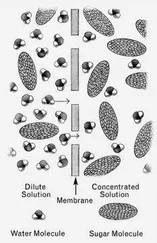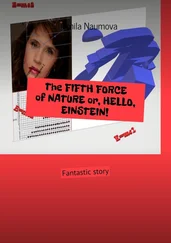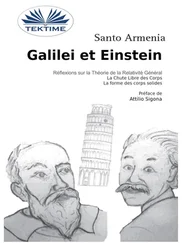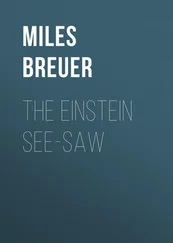She walked through the wide door marked SSC administrative offices and up to the broad counter. The air-conditioning felt wonderful. A woman behind one of the desks rose and walked over. She was tall and thin, pretty in a sharp-featured way, with dark eyes and long wavy black hair. She wore a low-cut white blouse with a necklace that featured several crystals of different colors with a central double-fish astrological symbol as a pendant. “May I help you?” she asked.
“Yes,” said Alice. She held out her press credentials. “I’m Alice Lang. I’m a journalist with Search magazine. I have a 1 p.m. appointment with Dr. Roy Schwitters, the SSC director.”
“Oh, of course,” the woman said. “I’m Belinda. Welcome to the Super Collider.” She smiled. “I’m very sorry, Ms. Lang, but Dr. Schwitters’s schedule has slipped a bit today. He’s still busy with Dr. Wang right now. Perhaps I could arrange for you to talk to somebody else.”
Just then a tall woman with gray hair done in a bun entered the building.
“Oh, Dr. Troy!” Belinda called.
The woman turned and walked to the counter.
“Dr. Troy, I’d like you to meet Alice Lang,” Belinda said. “She’s a reporter from Search magazine, and she’s here to do a story on the Collider.” She turned to Alice. “And Alice, this is Dr. Edwina Troy. She’s the SSC deputy director for operations. She headed the group that designed the SSC and now her group runs it.”
They smiled and shook hands.
“Do you have time to talk to me now, Dr. Troy?” Alice asked.
“Call me Edwina,” said the other woman. “I’d be delighted to talk to you about our accelerator. I could tell you some good stories about how we designed and built it. But I’m afraid this isn’t a good time. I have to get ready for a presentation.”
Alice made an appointment to interview her the following day, and Edwina left.
“She’s a very nice person,” said Belinda. “Too bad she couldn’t talk now. I’ll try to find someone else.” She took some papers from a plastic rack on the counter. “You need to do a little paperwork, so we can get you the proper access cards for the experimental areas and you can visit the experiments and interview the scientists. It’s not a big thing, but to keep the Washington crowd happy you’ll have to provide us with some information and sign a few release forms. Then we’ll get you your SSC press credentials, your access cards, and your radiation badge.”
“I’ll need a radiation badge?” Alice asked. She wasn’t sure she liked the implications of that.
“Oh, don’t worry,” Belinda said, smiling. “You won’t be exposed to any radiation made by the Collider. Nobody is, because it’s turned off whenever we go near it. But everyone who enters an area where there might be the possibility of increased radiation is required by federal regulations to carry a radiation badge. It’s just a sensible precaution. To get access to the places where the physicists work, you’ll need a radiation badge like the ones they carry. Okay?”
Alice nodded, still feeling a bit apprehensive.
Belinda’s “little paperwork,” as it turned out, consumed the better part of half an hour. Alice was just finishing the last form when a manlike machine rolled up to the counter. It was about the height and size of a man’s torso, a rectangular box with rounded corners, apparently propelled on cleated rubber tank treads. Atop the contraption was a curved full-color image of a man’s face and head. The head glowed with an eerie light, like a television screen that had been transformed into a head. The head was that of a rather good-looking man with blond hair, a darker blond beard streaked with gray, and ruddy cheeks. The man’s eyes looked unnaturally bright and sparkling, as if concealed lights were illuminating them.
“Hi, Belinda,” said the machine.
Alice watched the machine suspiciously. Was this some kind of joke they played on visitors?
“Hello, George,” Belinda replied. “Where are you? Seattle?”
“No,” the machine said. “I’m just over at LEM. This is finals week at the University of Washington, but I gave my students a take-home final last week and got away early. My grades are all turned in, so I’m here for the summer.”
Belinda turned. “Alice, I’d like you to meet Professor George Griffin.” She seemed amused by Alice’s bewilderment. “George, this is Alice Lang. She’s a reporter with Search magazine, and she’s just arrived here. She’s doing a story about the laboratory.”
Alice wondered if she should offer to shake hands with the machine, then noticed that it didn’t have any hands.
There was a whirring sound as the head swiveled in her direction. It smiled. “I’m delighted to meet you, Alice,” it said in a rich baritone voice. “Have you ever interacted with a remote before?”
“N-no,” she replied, feeling unsure of what to do. “Are you some kind of… of robot?”
Belinda and the machine laughed. Then the face of the machine looked embarrassed. “I apologize for laughing, Alice. No, I’m not a robot. I’m a human being of male persuasion who is presently sitting in a recliner a few miles away, conducting my business at the SSC office using telepresence. This machine is a telepresence remote that belongs to the laboratory. It’s a brand-new technology that was developed here.”
At the mention of the word “telepresence,” Alice smiled. That was a newsworthy detail that she could use in her Search story, and maybe in the novel, too. She looked with new interest at the little machine.
“It allows me to go about the administration building and talk to people,” George said, “just as if I were physically present here. Rolling into an SSC functionary’s office and demanding some action works better than a phone call or a fax, I’ve found. Present company excluded, of course. Even over the telephone I can sweet-talk Belinda into almost anything.”
Belinda laughed and threw a wad of paper at the machine.
“Uh, you can see using closed-circuit TV?” Alice asked.
“Not exactly,” the machine said, “although TV cameras are involved. I see you in full color and three dimensions and hear you in stereo, just as if I were standing in the room with you, and when my head turns, my camera eyes and microphone ears turn also. In fact, I have a better illusion of presence than you do because the remote I’m using is a cheap model. It doesn’t provide a very good representation of me as a real person. But as far as I’m concerned, I’m standing right in front of you.” The head pivoted with a whirr, looking her up and down.
Alice noticed that a pair of camera lenses, spaced about as far apart as human eyes, were mounted on the head unit and moved with it.
“Uh, George,” Belinda broke in, “would you perhaps have time to show Ms. Lang the LEM experimental area? She’s just arrived, and she needs to be shown around. She has an appointment with Dr. Schwitters, but he’s tied up in an emergency meeting with Dr. Wang.”
“Indeed,” said George, “a meeting from which I very much appreciate being absent.” The face smiled. “Jake has gone off on another of his personal crusades. He’s mounting an attack on some imagined beam degradation that he thinks is coming from the SDC.” The head swiveled in Alice’s direction.
Alice looked interested. “What’s SDC? Sounds like a designer drug,” she said.
George laughed again. “SDC stands for Solenoidal Detector Collaboration. It’s one of the many acronyms used around here, acronyms that you’ll have to get used to. SDC is one of two half-billion-dollar experiments presently going on at the laboratory. The other experiment is LEM, the one I’m working on.”
Читать дальше











